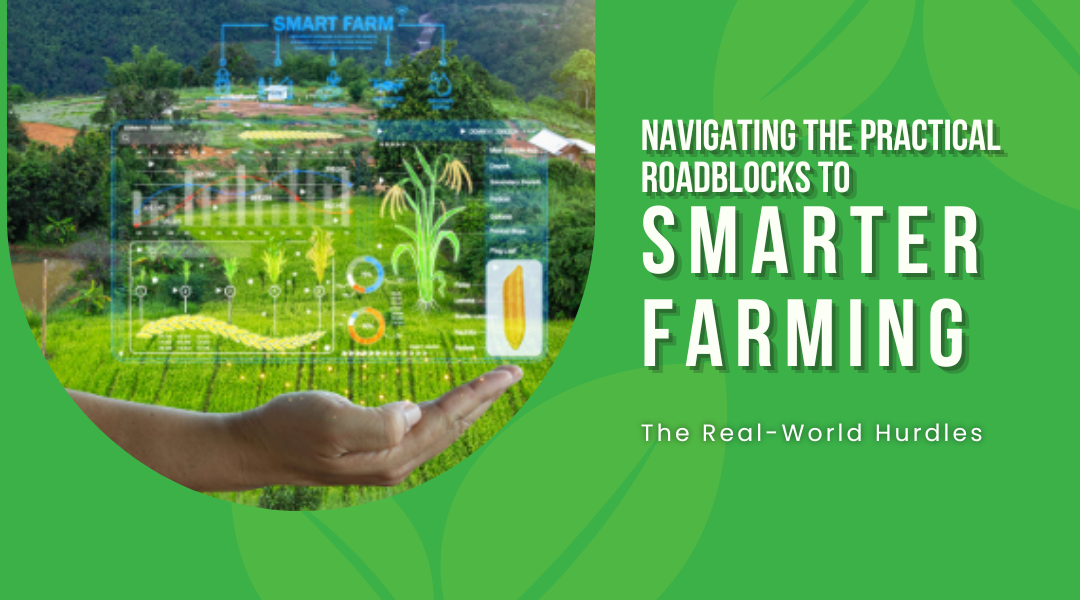The vision of AI-powered farms is compelling, but the path from prototype to production is paved with significant, real-world obstacles. For farmers considering this leap, the challenges aren’t just abstract technical concepts; they are practical, financial, and deeply human problems that must be solved before a single algorithm can be put to work.
The Data Dilemma: Garbage In, Garbage Out
At its core, AI is a mirror that reflects the data it’s given. In the messy, unpredictable world of agriculture, getting clean, useful data is the first and greatest challenge.
- The Problem of Scarcity and Context: An AI model trained to detect a fungal disease in the humid climate of Florida may be utterly useless in the arid fields of Arizona. Agricultural data is incredibly localized. A system needs thousands of images of a specific pest on a specific crop in a specific region to be accurate. For many lesser-known crops or regional issues, this data simply doesn’t exist in sufficient volume, making AI development a non-starter.
- The “Dirty Data” Problem: Field data is notoriously noisy. A soil sensor gets clogged with mud; a camera lens is spattered with rain; a drone image is blurred by wind. Before any analysis can begin, this data requires extensive cleaning—a tedious and expert-driven process of filtering out errors and inconsistencies. For a busy farmer, this data janitorial work is a hidden, unglamorous cost.
- The Tower of Babel: One company’s sensor speaks one data language; another’s tractor speaks a completely different one. The lack of universal standards means that a farmer’s equipment often can’t talk to each other, creating isolated data silos instead of a unified, intelligent system. A farmer might have excellent soil data on one platform and perfect yield maps on another, with no way to merge the two for a complete picture.
The Tech and Trust Gap
Even with perfect data, getting the technology to work reliably in a farm environment is a monumental task.
- The Connectivity Desert: Many of the world’s most productive farmland areas have poor or non-existent broadband internet. AI systems that rely on real-time data processing in the cloud are dead in the water without a stable, high-speed connection. This forces a reliance on slower, on-site computing or delayed batch processing, which defeats the purpose of real-time decision-making.
- The “Black Box” Conundrum: If an AI system tells a third-generation farmer to withhold water from a thirsty-looking field, that farmer needs to know why. Many advanced AI models are “black boxes”—they provide a recommendation without a clear, understandable explanation. Without transparency and interpretability, farmers are asked to trust a machine over their own hard-won intuition, a major cultural and practical barrier to adoption.
- The Fragility of Field Tech: Farming is a tough business for delicate electronics. A sophisticated harvesting robot might work perfectly in a controlled test environment, but how will it handle dust storms, torrential rain, or the inevitable rock hidden in the soil? The ruggedization and maintenance of advanced hardware add layers of cost and complexity.
The Bottom Line: Weighing Cost Against Uncertainty
For any business, the final question is about return on investment, and for AI in agriculture, this calculation is fraught with uncertainty.
- The Sticker Shock: The initial outlay is daunting. A single drone equipped with advanced sensors can cost tens of thousands of dollars. A fleet of autonomous weeders can run into the hundreds of thousands. For all but the largest operations, this requires significant debt or capital investment, a risky proposition in an industry already defined by thin margins and volatile prices.
- The Long Payback Period: While AI promises long-term savings through reduced labor and inputs, the payback period can be long and unpredictable. A system that saves 20% on water is valuable, but if a drought destroys the crop anyway, the investment is lost. Farmers need clear, demonstrable, and relatively quick financial returns to justify the risk.
- The New Skills Tax: Implementing AI isn’t a plug-and-play solution. It requires a new kind of farm manager—someone who can interpret data dashboards, manage IT systems, and troubleshoot complex hardware. This either means hiring new, expensive talent or investing heavily in training for existing staff, another hidden cost of adoption.
Conclusion: Building Bridges, Not Just Algorithms
Overcoming these hurdles requires more than just better technology; it requires a new approach to building it.
The future of agricultural AI lies not in creating perfect, all-knowing systems, but in developing practical, interoperable tools that solve specific, high-value problems. It depends on farmer-centric design that prioritizes explainable recommendations and rugged, simple interfaces. And it hinges on new financial models—like leasing programs or AI-as-a-service subscriptions—that lower the barrier to entry.
The goal is not to create a fully autonomous farm, but to provide farmers with a set of powerful, reliable assistants. By focusing on solving these tangible problems—the data quality, the connectivity issues, the cost barriers, and the trust deficit—we can ensure that the AI revolution reaches the fields where it’s needed most, not just the labs where it’s conceived. The true test of AI in agriculture will be its ability to get its boots muddy.
